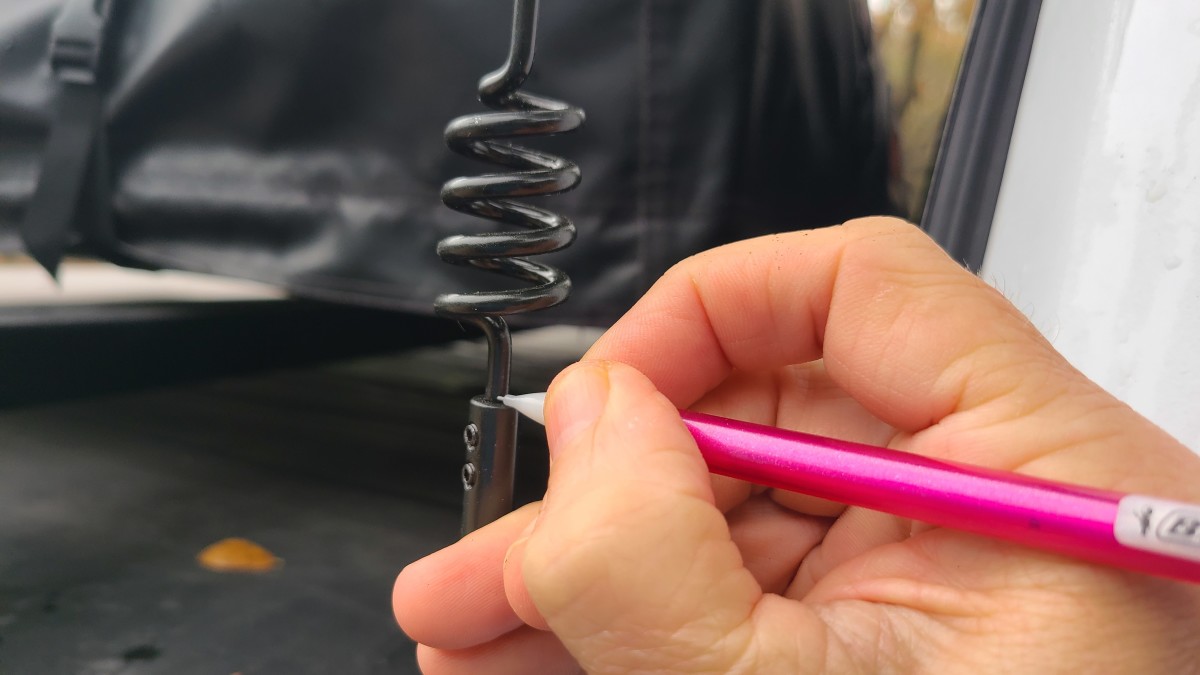Please note that not all antennas require adjustment, as some may already be properly tuned from the factory.
SWR meter: You’ll need an accurate SWR meter, such as the Surecom SW-33 MK2 or Nissei RS-40, both of which we’ve used with good success. (See notes below on choosing the correct meter for your radio.) Depending on your model of transceiver, you may need to purchase an antenna connector adapter and short length of cable to connect to your radio’s output. Most ham radios and CB’s use female Pl-259 connectors on the back of the set. Small Allen wrench set: Many amateur radio and CB mobile antennas are adjustable by loosening a small Allen screw that holds them in place. Bolt cutter: To cut a stainless steel antenna you’ll need a strong bolt cutter. (Be sure to wear eye protection when using one.) You can also use a grinder to take off small lengths of antenna.
Step 1: Check the SWR of Your Radio and Antenna
The first step is to check your radio and antenna’s SWR to see if any adjustment is necessary.
Step 2: Tune the Antenna
If you have a high SWR reading, the next step will be to tune the antenna so that it’s resonant at the frequency range you’ll be operating on the most. To do that, you may only have to move the antenna up or down a bit without cutting it. In some cases, though, you may need to take some length off the antenna using your bolt cutters. We’ll get to that later; for now, the first step is to check the SWR reading to know “where you’re at.”
Step 3: Shorten Your Antenna
If lowering your antenna is reducing SWR, and you’ve gone as far down as possible and are still above 1.5:1, then shortening the antenna element is the next step. Please note that once you’ve removed length from your antenna it cannot be reversed, so proceed very carefully.
Other Factors That Can Cause High SWR
The following are some other things—besides an antenna being too long or short—that can cause high SWR readings.
A short in the antenna cable or connector. (A multi-meter can be used to test for this by checking for any shorting between the outer coaxial cable and inner conductor.) There should be no conductivity between your antenna cable’s inside and outer part. Antenna placement too close to the vehicle’s cab or other metal objects can sometimes cause a high SWR reading. Moving the antenna farther away from the cab or other objects may fix this problem. A buildup of bugs or road grime may be causing a short between parts of the antenna, which are meant to be insulated from each other. Cleaning the antenna may solve this issue.
Tips for Choosing an SWR Meter
It’s crucial that you use an SWR meter that’s made for the frequency range of your ham radio, GMRS or CB. CB radio operates in the 27 MHZ range, so you’ll need an SWR meter made for that range. Since we own a GMRS radio and also a dual-band VHF-UHF ham radio, we use the Surecom SW-102, which is made to work from 125-525 MHZ. This is a good SWR meter for this range; however, it’s not meant for use with CB radios. Another good “no tuning required” meter for VHF-UHF is the Nissei RS-40, which we’ve also used with good success. An example of an SWR meter that works for CB radio is the Nissei RS-27. When choosing an SWR meter, It’s best to choose a model that doesn’t require calibration or tuning before each use. This will ensure consistent readings as you perform the steps above in tuning your antenna. Also, models that don’t require calibration reduce the amount of unnecessary transmission over the airwaves during testing. Lastly, be sure to purchase the proper connectors that you’ll need to hook up the meter to your radio. The Surecom SW-102 is made with SMA connectors. To use this meter on most mobile transceivers, you’ll need a pair of SMA female to UHF SO-239 adapters, as well as a short cable to connect the meter to your radio. This content is accurate and true to the best of the author’s knowledge and is not meant to substitute for formal and individualized advice from a qualified professional.

